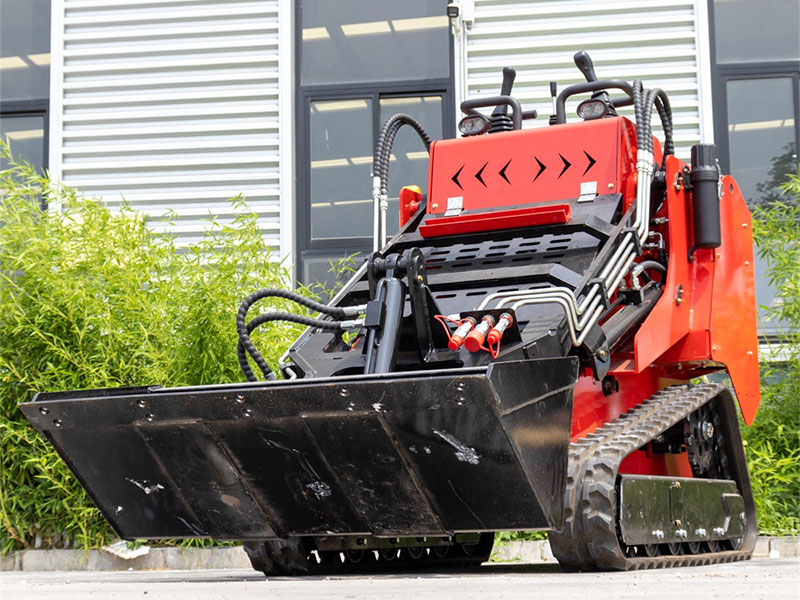In recent years, with the continuous rise in industrial energy efficiency requirements and the deepening advancement of green building concepts, thermal insulation retrofits for workshop buildings have increasingly become a crucial measure for enterprises to optimize production environments and reduce energy consumption. Against this backdrop, spray polyurethane machines have gradually emerged as the new favorite in industrial building insulation due to their construction efficiency and performance, providing an ideal solution for numerous manufacturing enterprises that balances energy savings with operational cost control.
I. Technical Principle: High-Pressure Mixing, Instant Molding
Spray polyurethane equipment utilizes high-pressure spraying technology. Two liquid components—isocyanate (Component A) and polyol (Component B)—are delivered to the spray gun head in a predetermined ratio. Upon impact and mixing, the mixture is instantly sprayed onto the building substrate. Upon contact with air, the components undergo a rapid chemical reaction, expanding and curing to form a continuous, seamless polyurethane foam insulation layer. This layer features high closed-cell density, delivering superior thermal insulation, waterproofing, and aging resistance. It can be widely applied to various substrates including concrete, metal panels, and brick walls.
II. Core Advantages: Multi-dimensional Enhancement of Construction and Usage Value
Rapid Construction, Shortened Project Duration
The spraying equipment offers high output and fast coverage, making it particularly suitable for large-span, high-ceiling industrial workshops. A single unit can cover hundreds of square meters daily, effectively overcoming the pain points of traditional insulation materials—such as cumbersome installation, numerous seams, and lengthy cycles.
Outstanding Insulation and Energy-Saving Performance
Polyurethane rigid foam boasts a low thermal conductivity (typically 0.022–0.028 W/(m·K)), delivering significantly higher thermal resistance than traditional rock wool or polystyrene boards at equivalent thicknesses. This substantially reduces energy consumption for summer cooling and winter heating in workshops, delivering long-term energy savings.
Environmentally Friendly with Low-Pollution Installation
The raw material system contains no volatile organic solvents, and the spraying process releases virtually no harmful substances, meeting modern industrial building requirements for environmental protection and occupational health. Polyurethane materials are recyclable, minimizing environmental impact throughout their lifecycle.
Comprehensive Performance with Diverse Additional Functions
Beyond thermal insulation, this coating offers superior waterproofing, moisture resistance, and corrosion protection, enhancing the overall performance of building envelopes. It is particularly suited for industrial facilities in humid, hot climates or environments with corrosive gases.
Easy Maintenance, Long Service Life
The spray-applied insulation layer forms a cohesive, durable coating that resists peeling or aging. Localized damage can be repaired by sanding and re-spraying the affected area, eliminating the need for extensive replacements and significantly reducing long-term maintenance costs.
III. Industry Outlook: Dual-Engine Growth from Policy and Technology, Expanding Application Scenarios
Driven by the advancement of “dual carbon” goals and the deepening implementation of policies like the Industrial Energy Efficiency Action Plan, market demand for industrial building energy retrofits continues to surge. As a key pathway for building energy conservation, spray polyurethane technology is experiencing rapid development.
Looking ahead, the adoption of new technologies like low-pressure mixed spraying and intelligent temperature-controlled spraying, coupled with the development of specialized polyurethane materials such as flame-retardant and ultra-low-temperature variants, is expected to further expand this technology into sectors with heightened demands for temperature control and airtightness. These include cold chain logistics warehouses, data centers, and cleanrooms.
I. Technical Principle: High-Pressure Mixing, Instant Molding
Spray polyurethane equipment utilizes high-pressure spraying technology. Two liquid components—isocyanate (Component A) and polyol (Component B)—are delivered to the spray gun head in a predetermined ratio. Upon impact and mixing, the mixture is instantly sprayed onto the building substrate. Upon contact with air, the components undergo a rapid chemical reaction, expanding and curing to form a continuous, seamless polyurethane foam insulation layer. This layer features high closed-cell density, delivering superior thermal insulation, waterproofing, and aging resistance. It can be widely applied to various substrates including concrete, metal panels, and brick walls.
II. Core Advantages: Multi-dimensional Enhancement of Construction and Usage Value
Rapid Construction, Shortened Project Duration
The spraying equipment offers high output and fast coverage, making it particularly suitable for large-span, high-ceiling industrial workshops. A single unit can cover hundreds of square meters daily, effectively overcoming the pain points of traditional insulation materials—such as cumbersome installation, numerous seams, and lengthy cycles.
Outstanding Insulation and Energy-Saving Performance
Polyurethane rigid foam boasts a low thermal conductivity (typically 0.022–0.028 W/(m·K)), delivering significantly higher thermal resistance than traditional rock wool or polystyrene boards at equivalent thicknesses. This substantially reduces energy consumption for summer cooling and winter heating in workshops, delivering long-term energy savings.
Environmentally Friendly with Low-Pollution Installation
The raw material system contains no volatile organic solvents, and the spraying process releases virtually no harmful substances, meeting modern industrial building requirements for environmental protection and occupational health. Polyurethane materials are recyclable, minimizing environmental impact throughout their lifecycle.
Comprehensive Performance with Diverse Additional Functions
Beyond thermal insulation, this coating offers superior waterproofing, moisture resistance, and corrosion protection, enhancing the overall performance of building envelopes. It is particularly suited for industrial facilities in humid, hot climates or environments with corrosive gases.
Easy Maintenance, Long Service Life
The spray-applied insulation layer forms a cohesive, durable coating that resists peeling or aging. Localized damage can be repaired by sanding and re-spraying the affected area, eliminating the need for extensive replacements and significantly reducing long-term maintenance costs.
III. Industry Outlook: Dual-Engine Growth from Policy and Technology, Expanding Application Scenarios
Driven by the advancement of “dual carbon” goals and the deepening implementation of policies like the Industrial Energy Efficiency Action Plan, market demand for industrial building energy retrofits continues to surge. As a key pathway for building energy conservation, spray polyurethane technology is experiencing rapid development.
Looking ahead, the adoption of new technologies like low-pressure mixed spraying and intelligent temperature-controlled spraying, coupled with the development of specialized polyurethane materials such as flame-retardant and ultra-low-temperature variants, is expected to further expand this technology into sectors with heightened demands for temperature control and airtightness. These include cold chain logistics warehouses, data centers, and cleanrooms.



Add message: